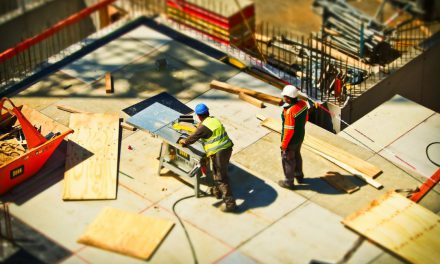An expanding problem
California’s housing production has long lagged behind demand.
This chronic shortage has only gotten worse — and more pervasive — in recent years.
While the nation as a whole fell short 1.65 million housing units in 2012, that number has more than doubled to 3.79 million units in 2019. As of 2019, California is 980,000 housing units short of meeting its residents’ housing needs, according to a recent report by Up for Growth.
In 2012, the nation’s housing underproduction appeared concentrated along the coasts, especially the Southwestern coast. Now, the deficit has deepened and sprawled out to nearly every state, affecting urban, suburban and rural areas alike.
Housing underproduction worsened in 47 states. Six states that did not suffer underproduction in 2012 now do. From 2012 to 2019, the housing deficit became more severe in 230 metropolitan areas. Nearly 75% of U.S. metro areas are experiencing worsening levels of housing underproduction. Only 25 regions saw their housing deficit shrink.
By the numbers, California underproduced:
- 389,000 units in Los Angeles-Long Beach-Anaheim, or 8.3% of the total housing stock — the #1 ranking metro area in the U.S. for underproduction;
- 153,000 units in Riverside-San Bernardino-Ontario, or 9.7% of the total housing stock — the #5 ranking metro area in the U.S.;
- 114,000 units in San Francisco-Oakland-Berkeley, or 6.2% of the total housing stock — the #7 ranking metro area in the U.S.;
- 68,000 units in San Diego-Chula Vista-Carlsbad, or 5.5% of the total housing stock — the #17 ranking metro area in the U.S.;
- 48,000 units in San Jose-Sunnyvale-Santa Clara, or 6.7% of the total housing stock — the #21 ranking metro area in the U.S.;
- 46,000 units in Sacramento-Roseville-Folsom, or 5.0% of the total housing stock — the #22 ranking metro area in the U.S.; and
- 17,000 units in Fresno, or 5.1% of the total housing stock — the #34 ranking metro area in the U.S.
Related article:
Obstacles to building
California’s dubious honor of ranking so competitively in underproduction is largely due to diminished production levels.
In 2005, roughly 205,000 residential units were built in California. In 2021, roughly 117,000 residential units were built. Despite the growth of its population since 2005, California is building about 90,000 less housing units per year than it built at the height of the Millennium Boom. [See RPI e-book Real Estate Economics, Factor 10: Construction]
The capacity to build more housing units is constrained by a tight labor market among builders, supply chain shortages for building materials and local zoning restrictions that continue to keep land costs high.
Builders are also cautious and pessimistic about their market, particularly as mortgage interest rates continue to rise, inversely affecting buyer purchasing power. This steep buyer purchasing power reduction has encouraged homebuyers in 2022 to step back from the market and cancel escrows and building contracts on new homes since they no longer qualify under the higher rates.
In response to these factors, builder confidence fell for the eight straight month in August 2022, this time falling into negative territory. This marks the lowest reading since May 2020, according to the National Association of Home Builders (NAHB).
As California struggles to crawl out of its inventory deficit, not-in-my-backyard (NIMBY) advocates dig the hole even deeper. NIMBYs successfully hamper building potential by advocating for restrictive local zoning ordinances to preserve the character of their neighborhoods and to limit the building of new housing units.
In practice, California’s zoning laws protecting character impact:
- land use;
- parking;
- lot sizes;
- building heights;
- permitting costs; and
- permitting times.
The Biden administration recently released a Housing Supply Action Plan which, in part, seeks to ramp up construction to complete more starts in 2022 than any other year since 2006. It also seeks to reward local agencies which have reformed their zoning laws. Consequently, high-scoring local jurisdictions which have loosened their zoning laws will be more likely to receive federal grant funding.
Related page:
California will need to get creative on its approach to increasing housing supply. Producing at a rate “more of the same” will continue having disastrous results for the state’s already dwindling population. More residents will be forced to leave, and fewer residents will want to move to the state with the worst housing shortage in the nation.
Keep up to date on pending and newly introduced legislative steps to increase California’s housing supply by subscribing to the firsttuesday Newsletter.
Related article:
The votes are in: severe housing shortages constrain inventory throughout California
Want to learn more about California’s housing market? Click the image below to download the RPI book cited in this article.















“Despite the growth of its population since 2005”
“Producing at a rate “more of the same” will continue having disastrous results for the state’s already dwindling population.”
The author seems to be confused as to which direction the population of California is headed.